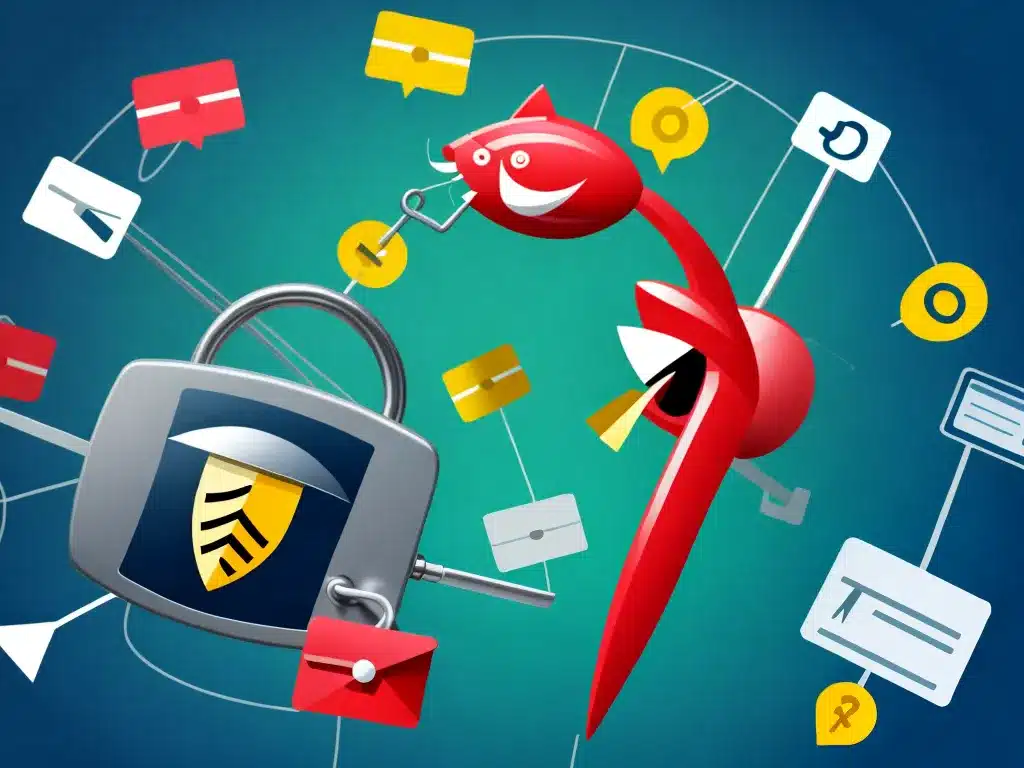What is Phishing?
Phishing is a type of cyberattack where criminals send fraudulent emails or texts, or create fake websites to steal sensitive information or install malware. The goal is to trick recipients into sharing login credentials, account numbers, Social Security numbers, or access to their computer.
Phishers use social engineering techniques to make messages seem authentic. They often impersonate trustworthy senders like banks, online retailers, social media sites, or other services. The message may look legitimate, but clicking links or opening attachments can compromise your device.
Phishing is a form of social engineering that relies on tricking users. Cybercriminals use phishing to steal login credentials, financial data, and other personal information.
Common Types of Phishing Attacks
There are a few common types of phishing scams to watch out for:
Spear Phishing
Spear phishing targets specific individuals or companies. The message often appears to come from someone the recipient knows, like a colleague or friend. Spear phishing takes more effort, but the payoff can be huge for criminals focused on a particular target.
Whaling
Whaling is phishing aimed at high-profile targets like corporate executives. The goal is to gain access to sensitive data by impersonating important contacts. Losses can be massive if a whaling attack tricks a CEO or CFO into wiring funds.
Smishing
Smishing uses text messages rather than emails for phishing. Criminals may send links to fake package tracking sites or other scams designed to steal information. Smishing targets mobile users.
Vishing
Vishing uses phone calls, voicemails, or robocalls to extract private data. Criminals often pose as tech support, tax agencies, or other organizations to seem credible.
Pharming
Rather than sending messages, pharming redirects users from a legitimate website to a fake site. Attackers tamper with DNS records so when a user types in a URL, they are sent to an imposter site.
Common Phishing Attack Tactics
Phishers use various psychological tricks and technical methods to convince targets to share information or download malware. Here are some of the most common tactics:
-
Urgency or fear – Phishers create a sense of urgency or fear so targets react quickly without thinking. This often involves threats of account suspension or legal consequences.
-
Familiar branding – Phishing websites and messages closely mimic the look of real brands, often using copies of logos and formatting. This makes it easier to deceive users.
-
Personalization – By including personal details like name, username, or location, phishers make messages seem customized.
-
Link manipulation – Deceptive links can direct to fake sites while appearing benign on first glance. Hovering over links reveals their true destination.
-
Attachments – Opening attachments in phishing messages can trigger malware downloads or capture of sensitive data. Common malicious attachments include .pdf, .doc, .xls, and .zip files.
How to Spot Phishing Attacks
With vigilance, you can recognize many phishing attempts. Watch for these red flags:
-
Generic greeting – “Dear user” or “Valued customer” rather than using your name.
-
Sense of urgency – Threats to close your account or face penalties if you don’t act now.
-
Suspicious sender address – The “From” email uses a public domain like @gmail.com or doesn’t match the company name.
-
Spelling and grammar errors – These signal an amateur criminal rather than professional organization.
-
Strange links and attachments – Don’t click or open anything suspicious or unfamiliar. Hover over links to see the true domain.
-
Requests for sensitive info – Legitimate companies won’t ask for your password, Social Security number, or bank details over email.
-
Threats or negative consequences – Scare tactics like account closure or legal threats are manipulation tactics.
-
Too good to be true offers – Extremely generous offers like gift cards, prizes, or investment opportunities are highly suspect.
How to Avoid Falling Victim to Phishing
With good security habits, you can avoid most phishing scams:
-
Enable two-factor authentication (2FA) – 2FA requires an extra code from your phone when logging in from a new device. This prevents criminals from accessing accounts with stolen passwords.
-
Avoid clicking links and attachments – Go directly to official websites by typing the URL in your browser. Don’t click links or open attachments from unknown senders.
-
Check for padlocks on websites – Secure websites start with “https” and display a closed padlock icon. Avoid entering sensitive info on non-secure “http” sites.
-
Be wary of requests for personal info – Banks and other legitimate companies won’t request your password or account numbers over email.
-
Hover over hyperlinks – This reveals the real URL that you will be directed to. Don’t click if the domains don’t match.
-
Use antivirus software – Keep all your devices and software updated. Antivirus can detect and disable malware.
-
Pay attention to website domains – Fake sites often mimic real domains with misspellings or extra characters. Look closely.
-
Report phishing attempts – Alert the organization being impersonated about scam messages. This helps protect others.
Safeguarding Yourself from Phishing
Phishing can seem ubiquitous, but defensive habits can keep you safe:
-
Treat unsolicited messages with skepticism. Don’t rush into action.
-
Verify senders by contacting them directly before responding.
-
Avoid risks by refraining from opening attachments or clicking links.
-
Report phishing to providers like email services, social networks, and banks.
Staying vigilant against phishing protects your finances, identity, and computer. Following security best practices makes you a hard target for criminals seeking sensitive data. With care, their tricks and scams can be avoided.












